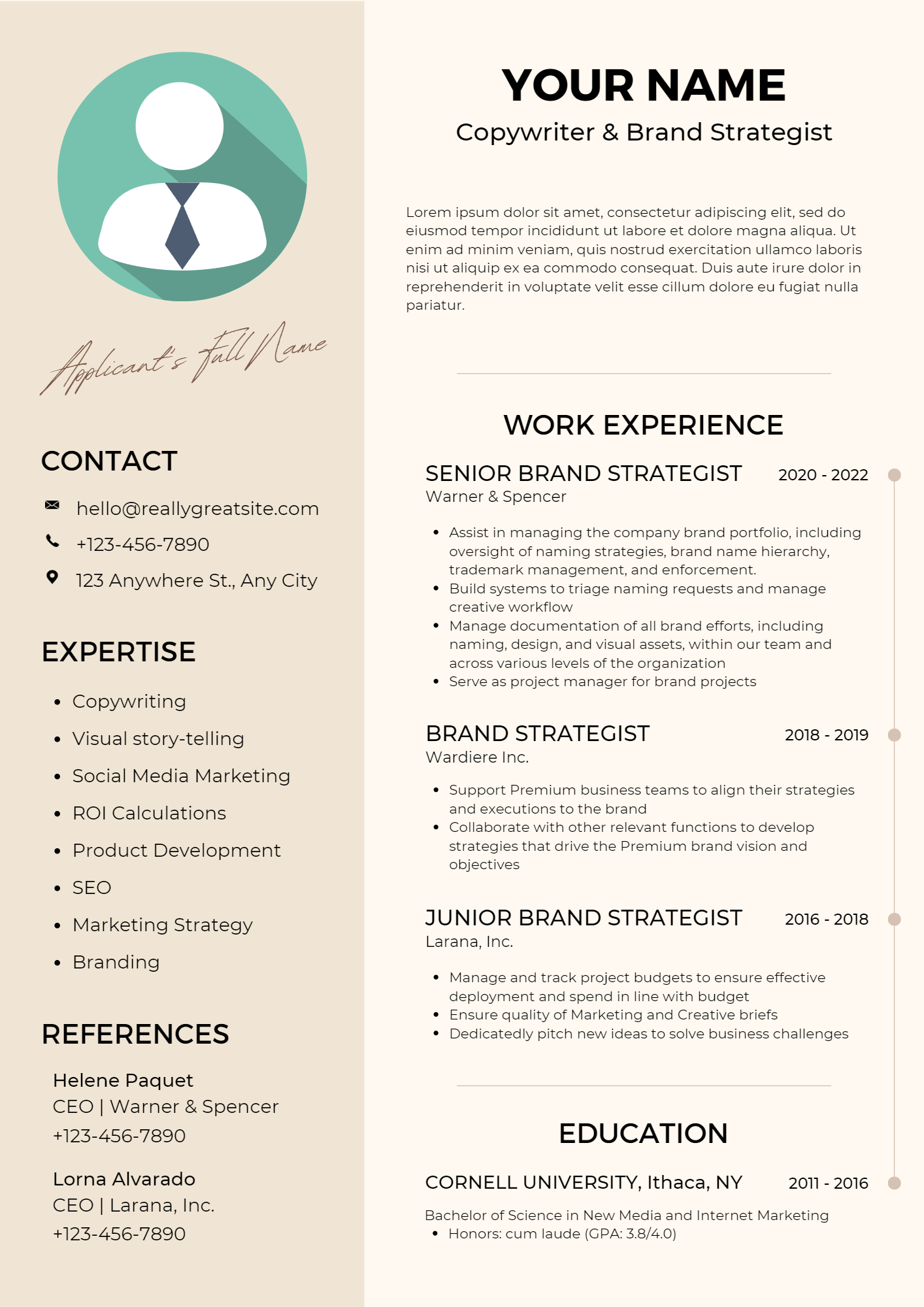Increase your chance of getting a job by creating a more professional CV, and with a clear layout that standouts. Are you currently looking for a job, and want to know how to create an impressive CV for your potential employers that will stand out and increase your chance of landing the job? Well, you gotta know more and how; firstly a CV lets you detail your educational background and academic achievements to show that you are well qualified for the position. Knowing how to impressively create your CV will surely leave a good impression on the interviewers. Read more and check out the sample CV template below.
Increase your chance of getting a job by creating a more professional CV, and with a clear layout that standouts.
Are you currently looking for a job, and want to know how to create an impressive CV for your potential employers that will stand out and increase your chance of landing the job? Well, you gotta know more and how, firstly a CV lets you detail your educational background and academic achievements to show that you are well qualified for the position. Knowing how to impressively create your CV will surely leave a good impression on the interviewers. Read more and check out the sample CV template below.
How to format a professional CV
Follow these steps to create a professional CV:
I. Create a header with your detailed contact information.
Your header should be at the top of the page and include your name, phone number, and email address so employers immediately know who you are and how to reach you.
II. Write a professional summary.
Your professional summary is a short bio that introduces you to the reader. This section sums up your best qualifications and explains your ideal career path.
III. Detail your educational background
Since a CV is often used for the academic job search process, it’s important to include a section on your educational history. List your education in reverse chronological order, with your most recent degree first. Include both degrees you’ve earned and those you’re pursuing.
IV. Provide your previous work experience.
Detail all your practical work experience so your prospective employer can see your career path, including:
Full-time and part-time employment
Include the title of your position, the name, the location of your employer, and employment dates. Below this, list two to three bullet points that explain your job duties.
V. List your relevant skills and personal interests
List any abilities that apply to the potential job, such as foreign languages or a type of software. Try to include skills that relate to the job description to make yourself a more desirable candidate. Describe your personal interests (optional) You can choose to include a brief description of your hobbies and interests. Including a few hobbies may help you form a personal connection with the hiring manager.
VI. Include additional sections.
CVs are usually longer than resumes so you can detail all the achievements relevant to the potential role. Add sections as needed to list all of your accomplishments, including:
Related: Listing Accomplishments and awards on your CV (With Examples)
VII. References
[People who can recommend you and give you good feedback could be your previous employer or colleagues]

